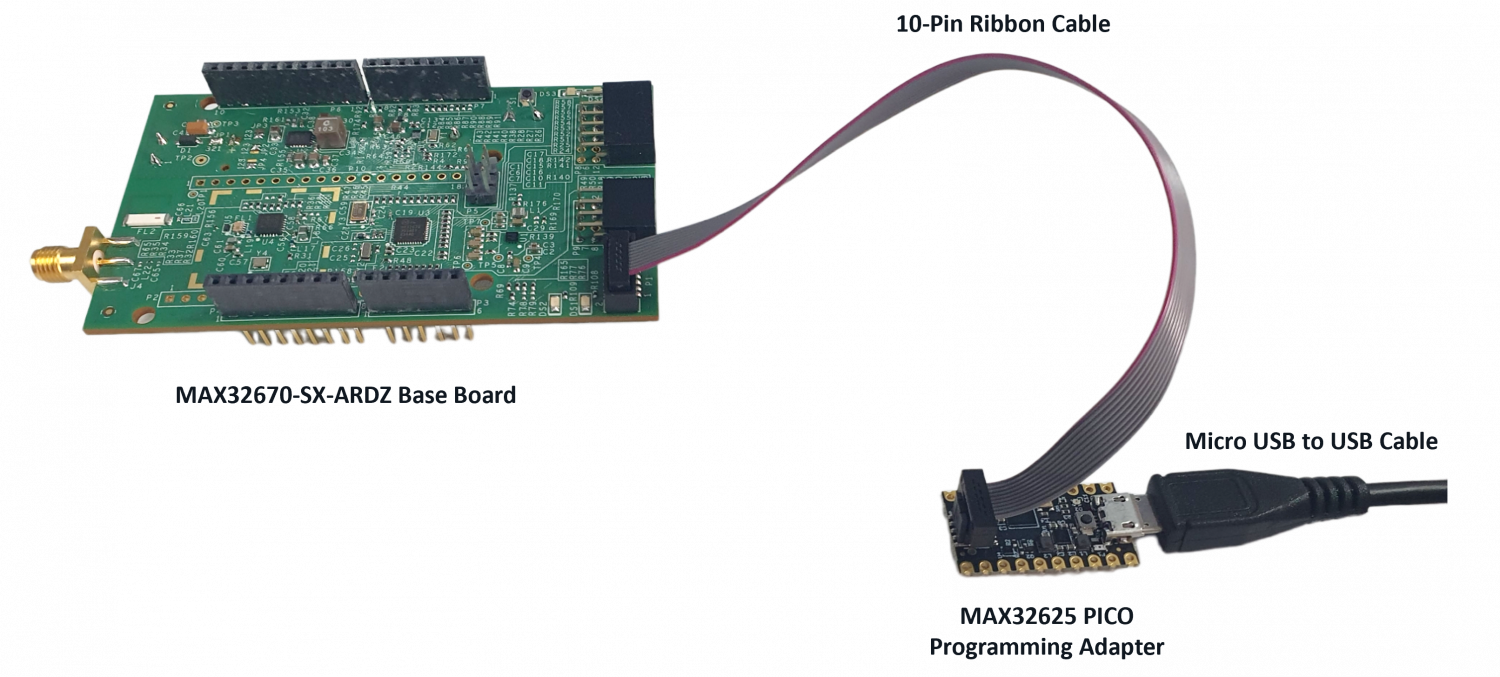
The AD-MAX32SXWISE-SL development kit is a tool intended for designing solutions based on low-power, long range proprietary radio communication technique. This platform features the SX1261 RF transceiver based on spread spectrum modulation techniques derived from chirp spread spectrum (CSS) technology, and supports a frequency range from 800 MHz to 960 MHz. This solution is also based on the MAX32670 ultralow power microcontroller based on Arm Cortex-M4 processor.
The kit is composed of a development board and equipped with sensor modules, providing users with a complete system that is suitable for quick prototyping and development of IoT applications. The design includes a gateway, which is crucial for establishing connectivity between the LPWAN devices and the backend or application server. This component is vital for data transfer and communication.
This also comes with software that allows users to observe nodes in a graphical user interface (GUI) dashboard. This feature enhances the monitoring and management capabilities of the system. To use the development board, users need to flash it with functional firmware. A simple join example has been open-sourced, providing more flexibility and easy customization in terms of firmware development.
Overall, the AD-MAX32SXWISE-SL development kit offers a comprehensive and user-friendly solution for individuals or developers interested in exploring and implementing LPWAN technology for IoT applications.
| MCU |
|---|
| Arm Cortex-M4 Core with FPU up to 100 MHz |
| 384 kB Flash Memory with error correction |
| 160 kB SRAM (128 KB with ECC enabled), optionally preserved in lowest power modes |
| Security |
| Available secure boot |
| Support cryptographic algorithms, including AES-128/192/256, 1024-bit DSA, 2048-bit (CRT) and secure boot loader |
| Power |
| Ultralow power Real Time Clock with integrated power switch |
| Average battery life: more than 10 years |
| Long Range Radio |
| Support FSK, GFSK, MSK, GMSK, and Long Range FHSS modulations |
| Programmable bit rate up to 62.5 kbps and 300 kbps |
| Support of all major sub-GHz ISM bands from 150 MHz to 960 MHz |
| High sensitivity: down to -148 dBm |
| Transmission distance: up to 15 km |
When you purchase the AD-MAX32SXWISE-SL development kit, the package comes with the following boards and accessories:
What is a Base Board?
A Base Board contains an RF transceiver chip and a microcontroller, which combine all the required elements for long range communication. This platform uses the chirp spread spectrum technique, allowing sensors to connect to a network and send and receive data in long distances.
This development kit comes with the MAX32670-SX-ARDZ as its base board. This board is consisting of the MAX32670 high-reliability, ultralow power microcontroller based on Arm Cortex-M4 processor, and the SX1261 long range transceiver module.
What are Sensor Nodes?
Sensor nodes are devices that wirelessly send or receive messages to and back from the gateways. These devices communicate with nearby gateways connected through a network server. Depending on the intended applications, sensors can transmit various type of data such as temperature, flow rate, vibration, etc.
Below are the sensor nodes compatible with the MAX32670-SX-ARDZ Base Board. All of these 3 sensors are included in the AD-MAX32SXWISE-SL development kit.
The EV-STRUCTURAL-ARDZ is a vibration sensor that uses the ADXL343 digital output MEMS accelerometer chip and the ADIS16203 programmable 360° inclinometer. Aside from providing vibration data, this end node also features the MAX30210 digital temperature sensor which gives the option to shut down sensitive machines and equipment for smart motor sensing applications. This vibration sensor can also detect if the horizontal position of the sensor changes, which points towards a collapse of the structure where the sensor was deployed.
The EV-FLOWMETER-ARDZ is an ultrasonic time-of-flight (ToF) flow meter that sends and receives ultrasound waves between piezoelectric transducers in both the upstream and downstream directions in the pipe. By measuring the TOF difference between the upstream and downstream wave travels, utilizing sophisticated digital signal processing techniques, a very accurate flow rate can be calculated.
The EV-ADE9000SHIELDZ is an Arduino shield compatible with Arduino Zero. The shield can be directly interfaced with current transformers and voltage leads. It enables quick evaluation and prototyping of energy and power quality measurement systems with the ADE9000. Arduino library and application examples are provided to simplify implementation of larger systems.
Note that this setup only applies for MAX32670-SX-ARDZ Base Board. Users may use a different base board or microcontroller, however the firmware built for this demo application cannot be used as this is specifically designed for the MAX32670-SX-ARDZ.
Make sure to check for the battery polarity in the BT1 connector, refer to the figure below. The DS3 LED will light up indicating that you have inserted the battery correctly and that power is provided in the base board.
You do not have to set up the three sensor nodes altogether, just choose one from the available sensors in the kit:
Make sure that the MAX32625PICO programming adapter has been flashed with the correct image before connecting it to the MAX32670-SX-ARDZ Base Board. If you do not know how to load the image, click on the instructions below:

Once you have completed this setup, proceed to PHASE 2 found in ADI Long Range Wireless Radio Software User Guide.
AD-MAX32SXWISE-SL Design Support Package
For questions and more information about this product, connect with us through the Analog Devices Engineer Zone.